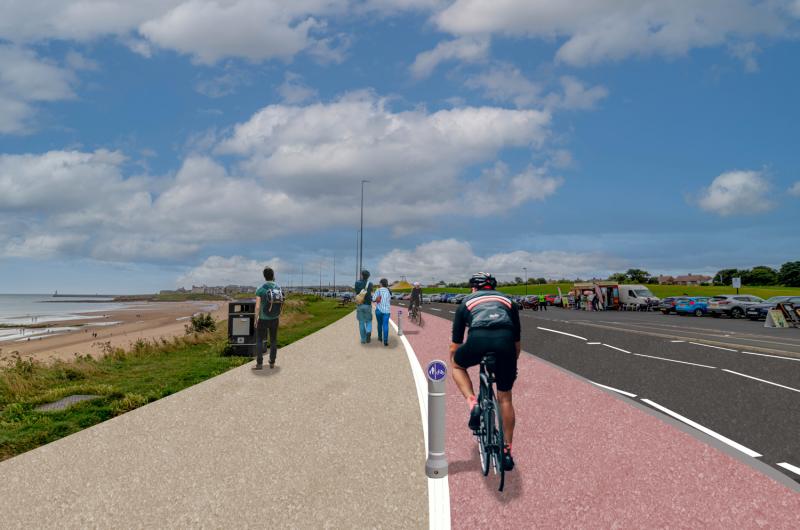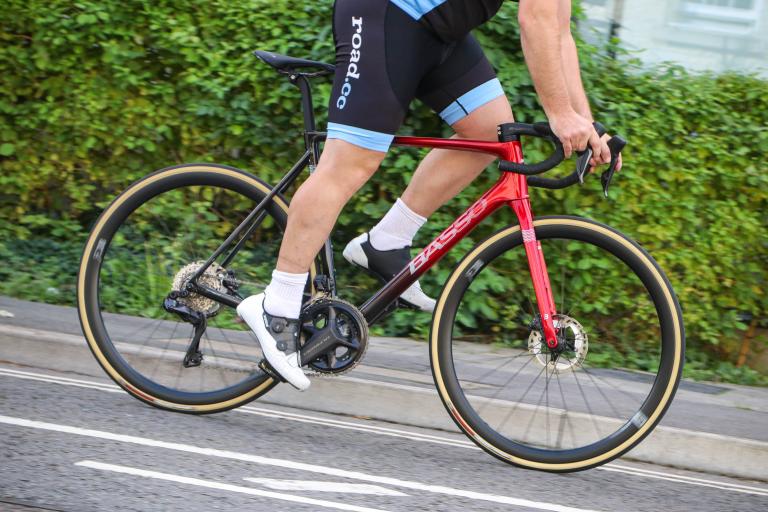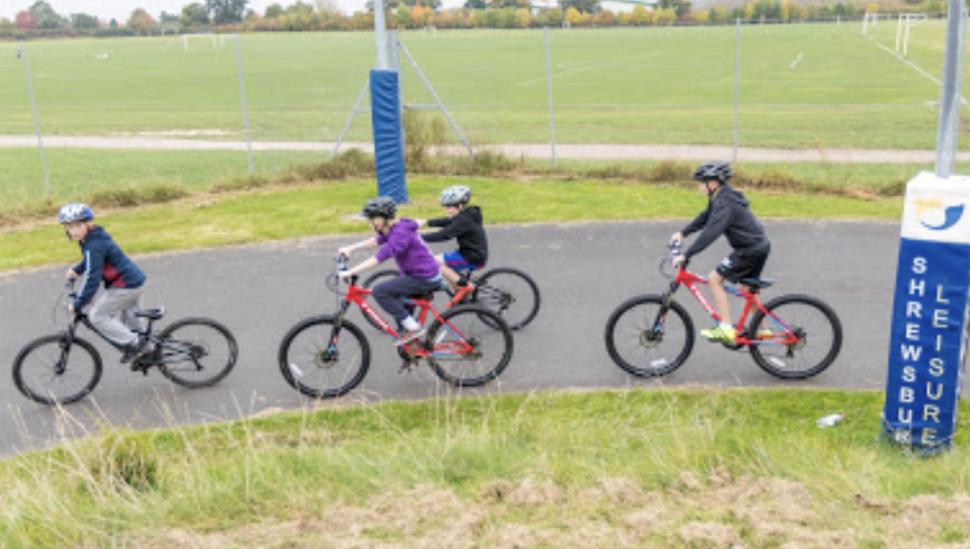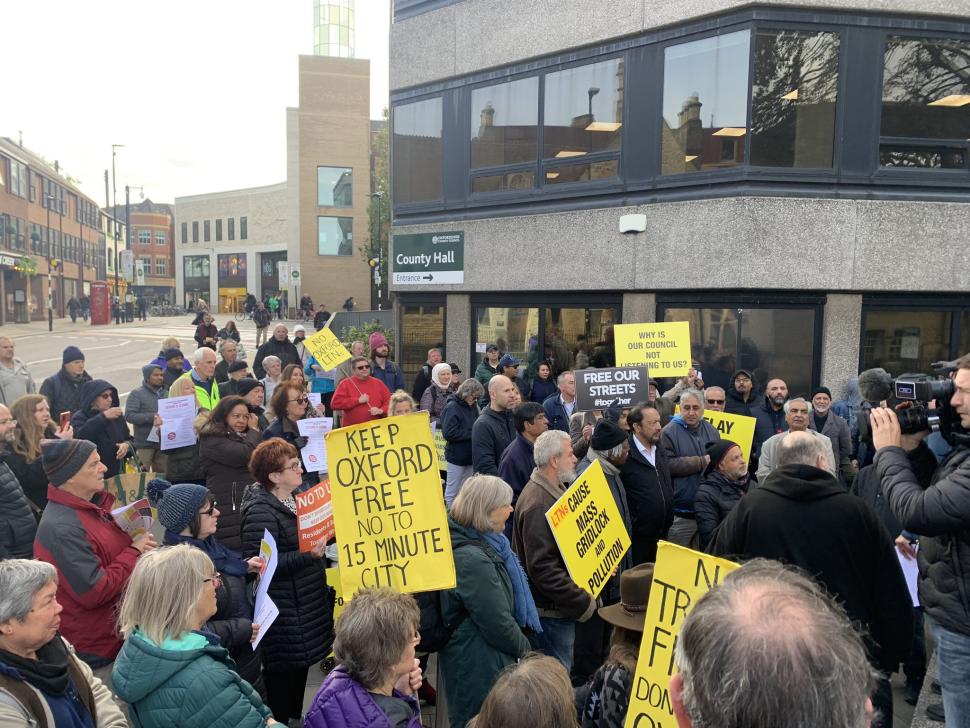- News
- Reviews
- Bikes
- Accessories
- Accessories - misc
- Computer mounts
- Bags
- Bar ends
- Bike bags & cases
- Bottle cages
- Bottles
- Cameras
- Car racks
- Child seats
- Computers
- Glasses
- GPS units
- Helmets
- Lights - front
- Lights - rear
- Lights - sets
- Locks
- Mirrors
- Mudguards
- Racks
- Pumps & CO2 inflators
- Puncture kits
- Reflectives
- Smart watches
- Stands and racks
- Trailers
- Clothing
- Components
- Bar tape & grips
- Bottom brackets
- Brake & gear cables
- Brake & STI levers
- Brake pads & spares
- Brakes
- Cassettes & freewheels
- Chains
- Chainsets & chainrings
- Derailleurs - front
- Derailleurs - rear
- Forks
- Gear levers & shifters
- Groupsets
- Handlebars & extensions
- Headsets
- Hubs
- Inner tubes
- Pedals
- Quick releases & skewers
- Saddles
- Seatposts
- Stems
- Wheels
- Tyres
- Health, fitness and nutrition
- Tools and workshop
- Miscellaneous
- Tubeless valves
- Buyers Guides
- Features
- Forum
- Recommends
- Podcast
news
Cycling lawyer's tongue-in-cheek post suggesting cars should be high-vis goes viral; "Even decent(ish) cycle infrastructure can't protect you fully from lazy, inattentive driving"; Timmy Mallett's cycle travels; Alpe d'Huez rumours + more on the live blog
SUMMARY
No Live Blog item found.
 The Biking Lawyer hi-vis advert
The Biking Lawyer hi-vis advert18 October 2023, 09:24
Cycling lawyer's tongue-in-cheek post suggesting cars should be high-vis goes viral
A bit more on this from yesterday's live blog...
And a new tongue-in-cheek 'advert' from The Biking Lawyer, a Canada-based "personal injury lawyer for cyclists", who imagined how those all too familiar campaigns placing responsibility on the most vulnerable to 'protect' themselves from road danger through personal protective equipment/clothing might look if the shoe were on the other foot.
We're asking elected officials, police & all those responsible for road safety to reimagine their messaging. Focus on the giant elephant in the room (dangerous drivers) & less on victimizing vulnerable road users - special mention to @RichmondRCMP. https://t.co/0pCqD14Xuo pic.twitter.com/Cs5TT1KuJs
— The Biking Lawyer (Dave Shellnutt) (@TheBikingLawyer) October 17, 2023
For examples of said campaigns, see:
> Police ask pedestrians to wear hi-vis following spate of road deaths in Scotland
> Met Police denies operation issuing hi-vis to cyclists was 'victim-blaming'
> Police accused of "victim-blaming" for advice to cyclists after two riders injured by drivers
And with the nights drawing in, I'm sure those won't be the last...
Anyway, back to the advert which has been widely shared on Twitter and Facebook, being seen more than 130,000 times on the former and attracting 1,800 comments on the latter. Honestly, I wouldn't bother going through them, unless you particularly enjoy seeing things go over people's heads...
More on the live blog tomorrow, same place, same time...
18 October 2023, 15:45
Unlikely transfer news: Eden Hazard edition
Eden Hazard begins his new career with Intermarché-Circus-Wanty 🤩
The football superstar chose our CUBE Litening to start his post-football adventures 🚴
Welcome to the family Eden! pic.twitter.com/hIShndld3g
— Intermarché-Circus-Wanty (@IntermarcheCW) October 18, 2023
18 October 2023, 16:09
"Hare-brained" segregated bike path will "prioritise a small handful of cyclists over thousands of commuters" and increase collisions, councillors claim
18 October 2023, 14:37
UCI president hails Scottish World Championships as "unprecedented success"
Zac Williams/SWpix.com
The UCI's president, David Lappartient, has spoken of his satisfaction with the first combined World Championships, the so-called 'mega worlds', where all cycling disciplines' annual championships were rolled into one Scottish celebratory festival.
Calling the event an "unprecedented success", Lappartient pointed to the TV figures as proof and suggested "disciplines that do not normally benefit from such a high level of TV and media coverage" will thrive thanks to the "increased exposure".
Pauline Ballet/SWpix.com
The UCI released a press release stating the championships had attracted 11.9 million viewers in the UK, 18.2 million in France, and 15.5 million in Italy.
"The TV figures show that the public massively followed the UCI Cycling World Championships competitions and that events and disciplines that do not normally benefit from such a high level of TV and media coverage benefited greatly from the increased exposure that will boost their popularity and development at international level," Lappartient said.
"The event saw around 8,000 athletes (elite and amateur) from 132 countries take part in the various disciplines on the programme.
"The first edition of the UCI Cycling World Championships was an unprecedented success."
18 October 2023, 13:51
"Blends modern performance with traditional styling to stand out from the crowd – and it's a joy to ride"
18 October 2023, 14:25
New surface laid at Shrewsbury Sports Village cycle track, scene of Tom Pidcock winning a national cyclocross title before falling into disrepair
The Shropshire Star reports that the cycle track at Shrewsbury Sports Village is to be repaired. Two weeks ago we reported that the facility, the scene of a national cyclocross victory for Tom Pidcock, had been described as "in ruins" with a cracking surface and "brambles shooting out of everywhere".
The works follow reports that 32 people had to be treated after falling off their bikes at events earlier this year.
"It is unfortunate that the surface has cracked due to the quality of the ground beneath, and we expect the new asphalt will provide a solution to that problem by flexing rather than cracking," councillor Robert Macey said.
Trackside trees are also to be cut back in an attempt to reduce the number of leaves which fall on the track, in turn making things even more dangerous.
18 October 2023, 13:37
"Even decent(ish) cycle infrastructure can't protect you fully from lazy, inattentive driving"
The words of Twitter, sorry X user, Alan who shared this video...
Even decent(ish) cycle infrastructure cannot protect you fully from crap, lazy, and inattentive driving. pic.twitter.com/M8e7AQI2TQ
— Alan Gordon (@agordonsalive) October 17, 2023
Now, I'll leave the semantic discussion about what qualifies for the "decent(ish) cycle infrastructure" tag to you lot in the comments section (I'm sure this one would rank pretty poorly over in the Netherlands). But I've got to admit the 'near miss' wasn't even in the top two things I was expecting to happen there.
As the video began I was too confident we were going to get a last-minute door opening, but no. Then I was certain it was going to be the driver turning left across Alan's path... wrong again, well, half right I guess.
The left turn into no-look U-turn plot twist certainly wasn't on my radar (and that's even when knowing for sure that something dodgy was going to happen in the 31-second window), so think about how he felt...
Give me the protected kerbside lane any day of the week. Way more likely to get doored on the driver side and crushed to death by cars accelerating hard behind you on this stretch. https://t.co/cfUMMWuTWV
— Alan Gordon (@agordonsalive) October 18, 2023
Not particularly fun either way to be fair...
18 October 2023, 13:47
"Going back is not realistic": Councillor stresses "need to change" as Oxford LTNs made permanent – but angry residents say "we can't get on bikes"
18 October 2023, 10:15
Alpe d'Huez summit finish touted for 2024 Tour de France Femmes finale
[ASO/Thomas Maheux]
Next year's Tour de France Femmes avec Zwift, the third edition of the race, is expected to be decided by an Alpe d'Huez summit finish. That's the belief of Dauphiné Libéré who suggest that the men's race will also include some headline Alpine stages, including one to Valloire over the Col du Galibier, and a final-week trip to Isola 2000 via the 2860m Cime de la Bonette.
[ASO/Charly Lopez]
If correct, the report would signal the Tour de France Femmes' first trip to the Alps, having made its Pyrenean debut this year. Both routes will be officially unveiled a week today in Paris, but stage seven is expected to be a summit finish at Le Grand-Bornand before the Alpe d'Huez finale a day later.
The race will leave Rotterdam as the Dutch city hosts the Tour de France Femmes' first overseas Grand Départ and will include three stages in the Netherlands, the nation of both previous winners Annemiek van Vleuten and Demi Vollering, before returning to French soil on stage four.
18 October 2023, 10:37
Wiggle Chain Reaction owner woes continue following "unjustified" withdrawal of €150m funding commitment by parent company
18 October 2023, 10:07
"Join us to demand action": Cycling protest following two cyclists killed in collisions in London borough
18 October 2023, 09:01
"Today it feels like an epic celebration of my year. I am so ridiculously proud of this": Timmy Mallett cycle tours the Scottish Hebrides... and gives us all travel envy
Timmy Mallett is living the dream...
Way to make us all feel jealous. Currently enjoying the Western Isles by bike, and stopping to paint the landscapes, the presenter and broadcaster is one of my favourite Strava follows. I mean just look at all those envy-inducing photos. He offers a daily report too...
"Cycling over 50 miles is tough on any day. Today it feels like an epic celebration of my year. I am so ridiculously proud of this....
"With the sun shining, the Isle of Lewis is at its finest in nine degrees and no wind. I made the effort to make the most of the day. Discipline is not a word I associate with Mallett. I'm far too in the moment.
"Today I left Elaine and Scott at the hotel and only stopped three times in the first mile along stunning Loch Erisort, and barely a dozen or so times before reaching Callanish standing stones 20 miles across the burnt sienna peat bogs and heather of North Lewis. Framed by the mountains of Harris this route undulates with rich brown tones and an eternal vista.
"Deep blue lochs and secret pools intersperse the sheep and occasional village."
18 October 2023, 08:33
Check out the Project D, the coolest bike you'll see this week
18 October 2023, 08:00
"Silent majority" want better cycling and walking infrastructure, campaigner argues
We're kicking off today's live blog with some cycle lane chat...
Over in Colchester there's a conversation happening about cycle lane usage, with Colchester Cycling Campaign chair Stuart Johnson making the case for why the figures — obtained through a Freedom of Information request that show cycle lane usage on one popular route dropped by 44 per cent compared with three years ago — aren't actually that bad.
In short, Johnson told the Daily Gazette and Essex County Standard, the baseline figure being used comes from a time when cycling levels were especially high — July 2020, when "people were furloughed, a lot of people were working from home, and traffic on the roads was mostly down, so people felt safer cycling on roads than they do now".
"There happened to be good weather in the lockdown in the spring and summer, and the roads were so much quieter," he added. "Unfortunately, what's happened is that the amount of traffic has picked up again, so we are not surprised that the current numbers of cyclists are lower than they were in July 2020."
Back then (the month of July 2020) there were an average of 478 users per day, however examining and comparing with a 479-day period between May 2022 and August 2023, usage fell to an average of 265 cyclists per day.
Again, Johnson defended the numbers: "Towards the end of August there were 300 cycling trips per day – we think that's very encouraging because the routes at the moment don't join up properly. The next thing is the need to make the lane permanent and make sure it joins up areas like Mile End and the hospital through the city centre.
"When people do actual surveys, like on YouGov, 77 per cent of people support measures to support cycling and walking. There's a silent majority of people wanting to make our streets safer."
You'll get no arguments from us there...
In fact, research from YouGov in November 2020 found that the public overestimates opposition to new bike lanes by 50 per cent. In short, when asked about whether they support schemes to encourage people to cycle or walk, only a fifth (19 per cent) opposed them and a tenth strongly opposed them (10 per cent).
But what about 15-minute cities?
Forget the conspiracy theories, 15 minute neighbourhoods are popular in Britain.
Here's what amenities do Britons want within a 15 min walk from their home
Bus stop: 90%
Post box: 87%
Pharmacy: 85%
GP surgery: 83%
Park: 81%More in chart 👇https://t.co/9sHKzqhD1I pic.twitter.com/ZnlWS4nedS
— YouGov (@YouGov) March 6, 2023
Dan is the road.cc news editor and joined in 2020 having previously written about nearly every other sport under the sun for the Express, and the weird and wonderful world of non-league football for The Non-League Paper. Dan has been at road.cc for four years and mainly writes news and tech articles as well as the occasional feature. He has hopefully kept you entertained on the live blog too.
Never fast enough to take things on the bike too seriously, when he's not working you'll find him exploring the south of England by two wheels at a leisurely weekend pace, or enjoying his favourite Scottish roads when visiting family. Sometimes he'll even load up the bags and ride up the whole way, he's a bit strange like that.
Add new comment
35 comments

[...] The best one is when they talk about some kind of road user who can't get by without their vehicle, such as somebody who is disabled or a tradesman who needs to carry tools in a van. [...].
- Who must have a motor vehicle?
"A motor racer".
- Mind you, we already have cycle races...
"OK, a taxi driver".
- Lots of places have cycle taxis (or just city / transit hub cycle hire schemes).
"OK, an ambulance driver."
- Cycle paramedics in the UK already and then there are these contraptions.
"You're just taking some ridiculous edge cases to make an argument!"
- And what are you doing?
I don't think there are many who're suggesting a zero motor vehicle future. However pretty much any idea of changing how our streets and roads work (a little) is seen as being equally ridiculous or impractical. Even reclaiming a couple of parking spaces...
It's difficult to understand the actual costs of our motoring. Those are diffuse, or initially appear tangential, or are deferred - like climate change, pollution, health consequences of reduced mobility, suppression of other transport modes etc.
Most people don't have time or inclination to understand how stuff works - they just get on with it. So (like road deaths) we just say "it must be that way, because it is that way".
Media and indeed politicians aren't keen to try to change that lack of understanding. People aren't interested in the details, why rock the boat? However I suspect that some are very happy this remains misunderstood!

And the Sunrise cycleway as locals have christened it was popular when the temporary scheme was in.
And the proposed scheme is also popular.
It's rubbish at the minute as a lot of the route is footways just defined as shared use.
"a six-week public consultation conducted by the local authority, starting in October 2021, recorded that out of more than 11,000 comments made, 6,965 were in favour. The consultation also recorded that 68% of the 1,500 respondents believed they would travel more sustainably if the scheme was permanently implemented."

The sunrise cycleway was great. It was a crying shame it wasn't implemented permanenetly. The road along the sea front is a required route for no-one bar residents. Commuters, deliveries, anyone can use the A193 about 150m to the west that is more direct and faster to get from Tynemouth to Whitley! it just isn't as pretty.... which seems to be conveniently forgotten by all the nay sayers.

OOH the comments are fantastic(ally bad).
I thought this was comedy gold!
"I would ban all cycles, motorcycles and anything else other than with 4 wheels and seatbelts. safety first. why should car drivers have to suffer the stress and irritation of this nonsense of sharing their roads with lesser means of transport paying no tax, no insurance, nada, zilch, nothing ? Seriously, under health and safety rules how on earth are these two wheeled deathtraps even be allowed ? its pure lunacy. ban them. problem solved. I dont want to live in some third world cycling commune."
Douglas Adams would have been happy to have written that.... although I guess he would have added a two headed traffic warden to the mix.
Pages
Latest Comments
- chrisonabike 3 sec ago
That would not withstand challenges given it's an "advisory cycle lane". So not illegal to drive or park in. In fact in many cases it would make...
- matthewn5 22 min 40 sec ago
A friend in my cycling club has a new Ribble Allroad, I think the model with 105, and when I asked how he was finding it (before reading this...
- Rendel Harris 31 min 45 sec ago
Well yes but that's if you're looking at an equation x = n x 3 where n is any number less than 5. If you're looking for a number that is three...
- check12 1 hour 49 min ago
Get them back? They've never gone away for me, cheap tdf winning bikes on eBay with rim brakes and cheap rim brake aero wheels, just don't tell...
- Simon E 2 hours 32 min ago
It used to be called Buy Nothing Day as a protest against the the Black Friday discounting madness. The constant BF adverts, promos and stuff...
- chrisonabike 4 hours 47 min ago
Apologies - you're quite right! Something about presentation and comprehension...
- wtjs 5 hours 8 min ago
You can find out whether they're lying about 'taking action' by asking them what they actually did. When they refuse to tell you, citing various...
- chrisonabike 9 hours 53 min ago
Also don't forget - Sustrans are a charity *....
- chrisonabike 10 hours 4 min ago
Yes ... but (just due to the large numbers of people affected) this likely would only proceed in the UK at a very ... cautious ... pace....














